Peppercorns are the dried berries of the Piper nigrum vine, native to India's Malabar Coast. Black, white, green, and pink varieties all come from the same plant but differ based on harvest time and processing methods. This comprehensive guide answers exactly where peppercorns come from, explains regional flavor differences, and reveals professional cooking techniques most home chefs miss - all backed by historical context and practical application.
Table of Contents
- Where Do Peppercorns Come From Originally? (The Real Source)
- Black vs White vs Green vs Pink Peppercorns: Complete Comparison
- Why Peppercorn Origin Affects Flavor (Terroir Explained)
- 5 Professional Peppercorn Techniques Home Chefs Need
- Can You Grow Peppercorns at Home? (Indoor Growing Guide)
- Pepper History: Why It Was Once Worth More Than Gold
- How to Use Peppercorns Like a Pro Chef
- Buying Guide: How to Spot Quality Peppercorns
- Peppercorn Facts You Didn't Know
- Peppercorn FAQs Answered
🌍 Where Do Peppercorns Come From Originally?
Peppercorns originate from the Piper nigrum flowering vine, native exclusively to the Malabar Coast of southwestern India (modern-day Kerala). This is the true birthplace of all commercial peppercorns worldwide, with cultivation dating back over 4,000 years.
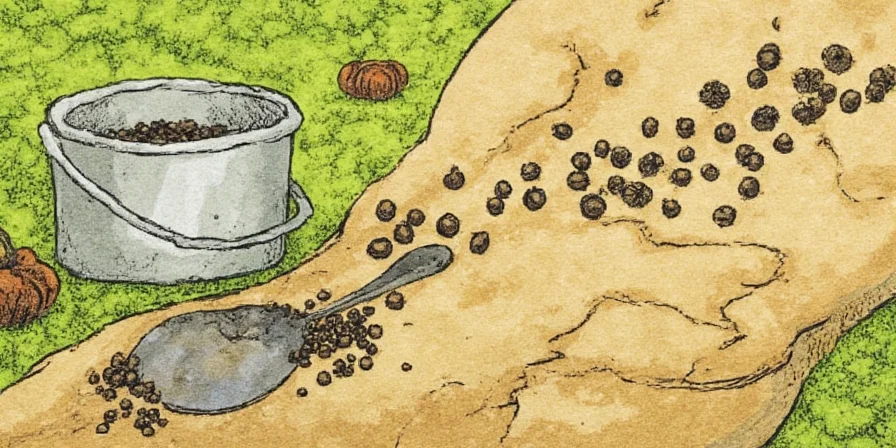
How Peppercorns Grow
Contrary to popular belief, peppercorns aren't seeds but rather dried berries. The Piper nigrum vine produces clusters of small berries that change color as they ripen:
- Green when unripe
- Red when fully ripe
- Black after sun-drying (when harvested nearly ripe)
Top Peppercorn Producing Countries Today
| Country | Production Percentage | Distinguishing Characteristics |
|---|---|---|
| Vietnam | 34% | Milder flavor, uniform size, often used in commercial blends |
| India | 20% | Complex earthy notes with citrus undertones, considered premium quality |
| Brazil | 15% | Fruity aroma, robust flavor profile |
| Indonesia | 12% | Smoky, rustic character ideal for hearty dishes |
| Madagascar | 5% | Citrusy brightness, specialty product |
🟥🟨🟩🟥 Black vs White vs Green vs Pink Peppercorns: Complete Comparison
All true peppercorns (black, white, green) come from the same Piper nigrum plant. The color difference comes from harvest timing and processing:

| Type | Processing Method | Flavor Profile | Best Uses |
|---|---|---|---|
| Black | Harvested nearly ripe, sun-dried until black | Sharp, pungent, complex heat | All-purpose seasoning, meats, roasted vegetables |
| White | Ripe berries soaked to remove outer layer, then dried | Milder, earthy, less complex | Light-colored sauces, mashed potatoes, cream soups |
| Green | Unripe berries preserved in brine or freeze-dried | Fresh, grassy, milder heat | Seafood, salads, vinaigrettes, cocktails |
| Pink | From Schinus tree (not true pepper) | Sweet, fruity, mild heat | Decorative use, finishing touch, cashew allergy warning |
🧬 Why Peppercorn Origin Affects Flavor (Terroir Explained)
Like wine grapes, peppercorn flavor is heavily influenced by terroir - the environmental factors where they're grown. Kerala's unique combination of laterite soil, high humidity, and monsoon climate creates peppercorns with:
- Higher piperine content (the compound responsible for heat)
- Complex flavor layers including woody base notes with citrus undertones
- Longer-lasting aroma compared to mass-produced alternatives
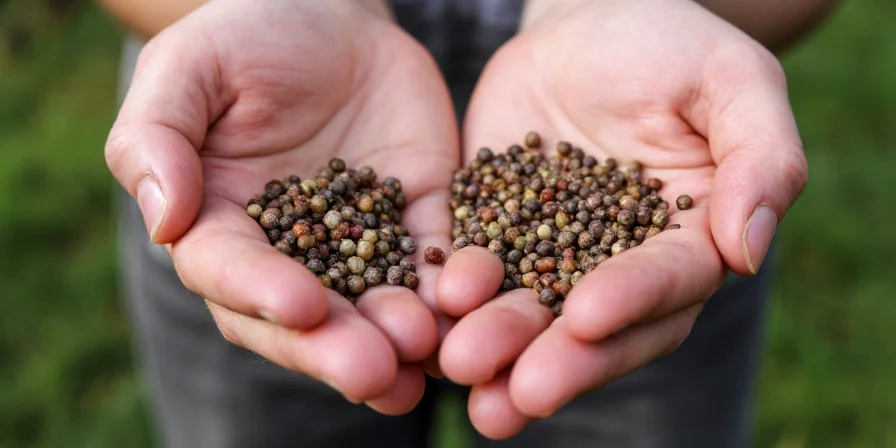
Climate Change Impact on Peppercorn Quality
Eyewitness reports from Kerala farmers show how erratic monsoons are affecting harvests. Traditional harvest cycles have shifted by 4-6 weeks, resulting in:
- Lower piperine content (less heat)
- Inconsistent berry size
- Reduced aromatic complexity
This explains why many home cooks notice flavor variations between peppercorn batches - it's not your imagination!
📌 5 Professional Peppercorn Techniques Home Chefs Need
Professional chefs use these techniques to maximize peppercorn flavor. Try these evidence-based methods:
- Grind Immediately Before Use: Studies show whole peppercorns retain 95% of volatile oils, while pre-ground loses 60% within 30 days. Invest in a quality mill.
- Toast Before Grinding: Lightly heat whole peppercorns in dry pan for 2-3 minutes to enhance nutty notes. Cool before grinding.
- Layer Different Pepper Types: Combine black for heat, green for freshness, and pink for visual appeal in custom blends.
- Match Pepper to Protein: Use bold Kerala pepper with red meats, milder Vietnamese with poultry, fruity Brazilian with seafood.
- Use Whole Berries in Cooking: Add 8-10 whole peppercorns to braises, stocks, and pickling liquids for subtle background heat.
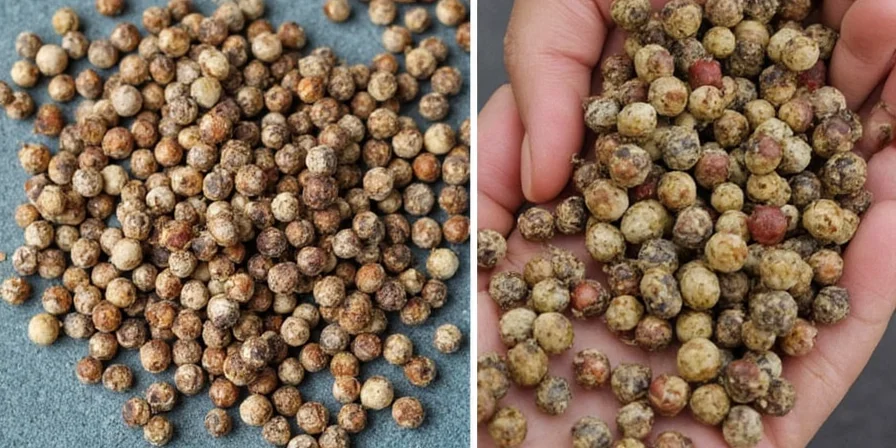
🌱 Can You Grow Peppercorns at Home? (Indoor Growing Guide)
Yes, but it requires specific conditions mimicking its tropical habitat. Here's what you need:
| Requirement | Minimum Standard | Professional Recommendation |
|---|---|---|
| Temperature | 60°F (15°C) year-round | 75-85°F (24-29°C) with humidity above 70% |
| Light | 4 hours indirect sunlight | 12 hours grow lights (6500K) |
| Soil pH | 5.5-7.0 | 6.0-6.5 with high organic matter |
| Time to Harvest | 3-5 years | Start with 2-year-old vine to reduce wait time |
Realistic Expectations for Home Growers
While possible, home cultivation rarely produces enough berries for regular use. Most indoor growers harvest 10-20 berries per season - barely enough for one meal. Consider it a botanical project rather than practical source.
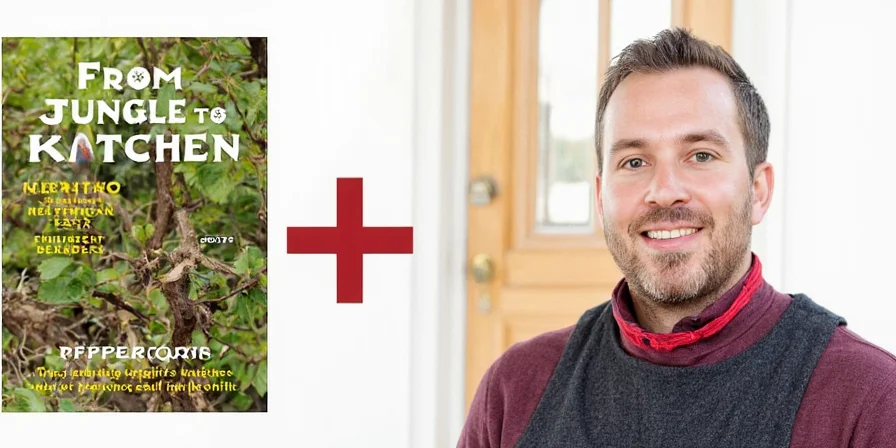
⏳ Pepper History: Why It Was Once Worth More Than Gold
Peppercorns weren't always kitchen staples. In ancient times, they were literally worth their weight in gold:
- 410 AD: Visigoths demanded 3,000 pounds of peppercorns as ransom during Sack of Rome
- Medieval Europe: Stored in locked chests like precious metals
- 1498: Vasco da Gama's voyage to India was primarily motivated by breaking Arab pepper monopoly
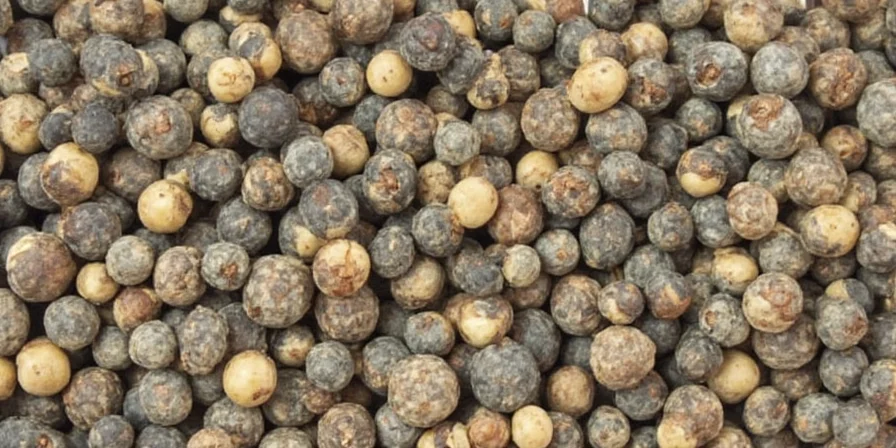
Why Pepper Was So Valuable
Before refrigeration, pepper served crucial functions beyond flavor:
- Preserved meat by inhibiting bacterial growth
- Masked spoilage in less fresh foods
- Had medicinal uses in traditional healing
🍳 How to Use Peppercorns Like a Pro Chef
Professional kitchens use peppercorns in sophisticated ways most home cooks miss:
Technique 1: The Two-Pepper Rule for Steaks
Combine equal parts black Tellicherry pepper (for heat) and green peppercorns (for freshness) in a mortar. Press mixture into steak before searing for complex flavor that doesn't overpower.
Technique 2: Pepper-Infused Finishing Oil
Heat ½ cup olive oil with 2 tablespoons crushed black peppercorns over low heat for 10 minutes. Cool, strain, and use as finishing oil on grilled vegetables or pasta dishes.
Technique 3: Citrus-Pepper Balance
Add lemon or lime zest when using peppercorns in seafood dishes. The citric acid enhances piperine absorption, creating brighter, more complex heat.
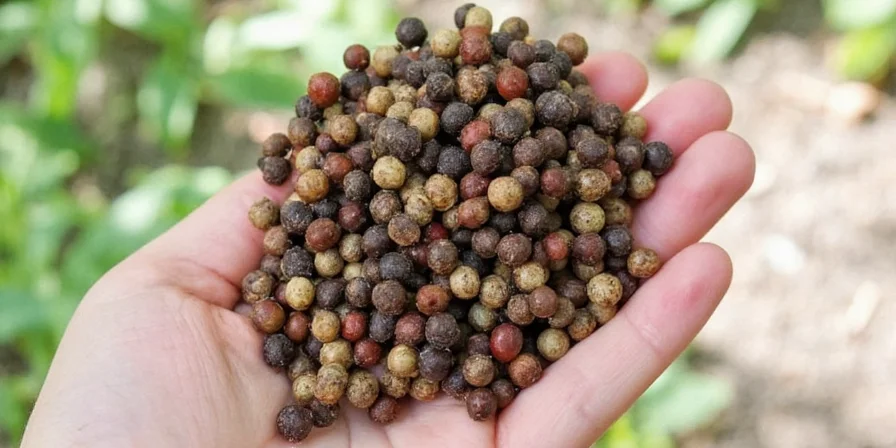
🛒 Buying Guide: How to Spot Quality Peppercorns
Most grocery store peppercorns lose flavor within months. Follow these professional selection tips:
3-Step Quality Test
- Visual Inspection: Look for uniform size and deep color (black should be nearly black, not brown)
- Aroma Test: Crush one berry between fingers - should release immediate sharp, pine-like scent
- Moisture Check: Rub between fingers - should feel dry, not sticky or oily
What Quality Labels Really Mean
- "Tellicherry": Large berries (4.25+ mm) from Kerala - superior flavor concentration
- "Rainforest Alliance Certified": Sustainable farming practices, better flavor consistency
- "Single Estate": Traceable origin, usually higher quality control
🌶️ Peppercorn Facts You Didn't Know
- Pepper contains piperine, which increases nutrient absorption by up to 2000% for certain compounds
- Real peppercorns float in water while adulterated ones sink (simple purity test)
- The word "pepper" comes from Sanskrit "pippali" - originally referring to long pepper, not black pepper
- Pink peppercorns contain compounds that can trigger reactions in cashew/pistachio allergy sufferers
- Fresh peppercorn clusters were once called "pepper corns" (literally corns of pepper)
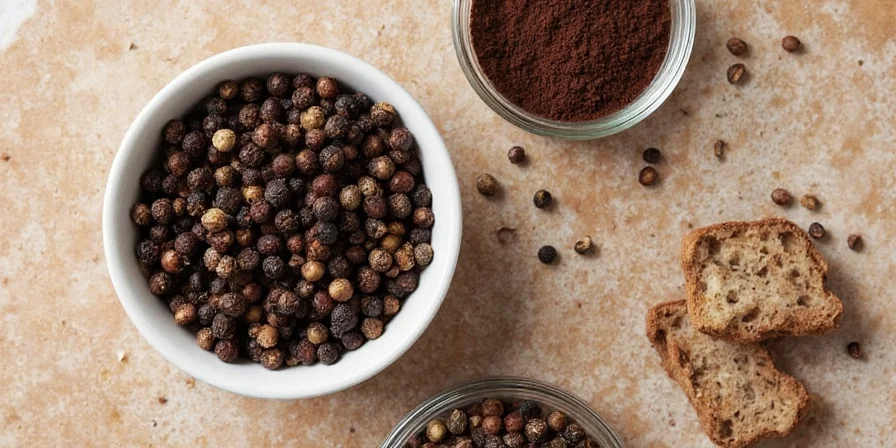
❓ Peppercorn FAQs Answered
Where do peppercorns come from originally?
Peppercorns originate from the Piper nigrum vine native to India's Malabar Coast (modern-day Kerala). This region has been the epicenter of pepper cultivation for over 4,000 years, with ancient traders calling it "black gold" due to its value.
What's the difference between black and white peppercorns?
Both come from the same plant. Black peppercorns are harvested when nearly ripe and sun-dried, creating their characteristic dark color and robust flavor. White peppercorns come from fully ripe berries that undergo fermentation to remove the outer layer before drying, resulting in milder, earthier flavor preferred for light-colored dishes.
Why is Indian black pepper considered superior?
Indian black pepper, particularly from Kerala, develops complex flavor compounds due to ideal soil conditions and traditional sun-drying methods. Its higher piperine content creates a more layered heat profile compared to mass-produced alternatives. Climate change is now threatening this quality as erratic monsoons disrupt traditional harvest cycles.
How should I store peppercorns for maximum freshness?
Store whole peppercorns in an airtight container away from light and heat. Whole berries retain volatile oils for up to 3 years, while pre-ground pepper loses potency within months. Never store near stovetops or in clear containers where light can degrade quality.
Are pink peppercorns real pepper?
No, pink peppercorns aren't true peppercorns. They come from the Schinus terebinthifolius tree (related to cashews) and have a sweet, fruity flavor. While generally safe, they can cause allergic reactions in people with cashew or pistachio allergies and should be used sparingly as a finishing spice rather than primary seasoning.

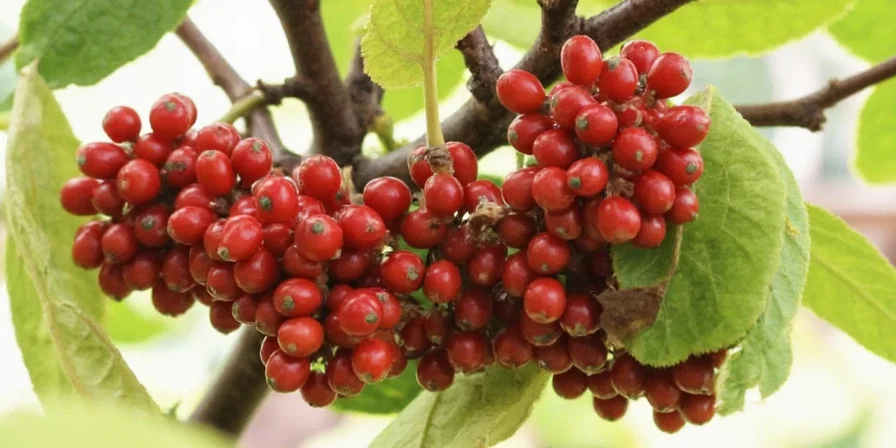









 浙公网安备
33010002000092号
浙公网安备
33010002000092号 浙B2-20120091-4
浙B2-20120091-4